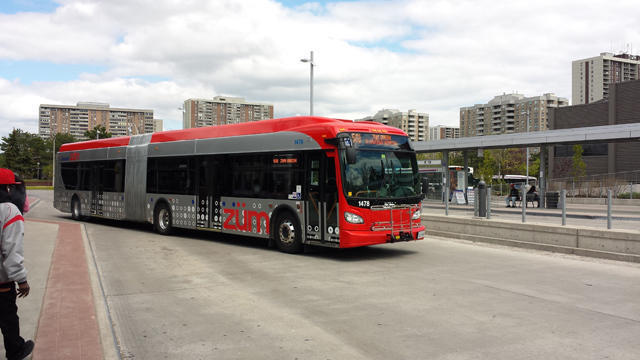Here’s How Much Money Brampton Will Receive for Transit Projects
Published January 8, 2019 at 8:23 pm

While provincial debt has dominated headlines for years, few people have been able to successfully argue for a reduction in transit and infrastructure investment–especially as Ontario (and its maj
While provincial debt has dominated headlines for years, few people have been able to successfully argue for a reduction in transit and infrastructure investment–especially as Ontario (and its major cities, Brampton included) welcomes more and more residents.
But while there’s still some uncertainty regarding the future of the Hurontario LRT in Brampton (although construction is still proceeding as planned), the Ontario government recently announced that it’s helping 107 municipalities across the province expand or improve their public transit systems with Ontario’s gas tax program.
“We are investing in public transit to make it a more convenient travel option and to attract more riders,” said Jeff Yurek, Minister of Transportation. “More public transit will cut through gridlock and get people moving.”
The previous Liberal government also offered municipalities financial assistance from the gas tax program in 2017.
This year, the province is giving $364 million in gas tax funding to over 100 municipalities that provide public transit service to 144 communities across Ontario.
These communities represent over 92 per cent of Ontario’s total population.
In 2017, municipalities received $357.2 million in total.
So, how much is Brampton receiving?
According to the province, Brampton–which is the ninth largest city in all of Canada–will receive $13,260,942.
In 2017, it received a little over $11 million.
According to the province, funding for Ontario’s gas tax program is determined by the number of litres of gasoline sold in the province. The program provides municipalities with two cents per litre of provincial gas tax revenues.
Municipalities receiving gas tax funding must use these funds towards their public transit capital and/or operating expenditures, including upgrading transit infrastructure, increasing accessibility, purchasing transit vehicles, adding more routes and extending hours of service.
According to the province, the share that each municipality receives under Ontario’s gas tax program is based on a formula of 70 percent ridership and 30 percent population. These funds serve both the needs of large and small municipal transit systems.
Municipalities that contribute financially to public transit services are eligible for funding.
Municipalities not currently providing transit can become eligible for funding if they start up fully-accessible transit services.
insauga's Editorial Standards and Policies advertising





